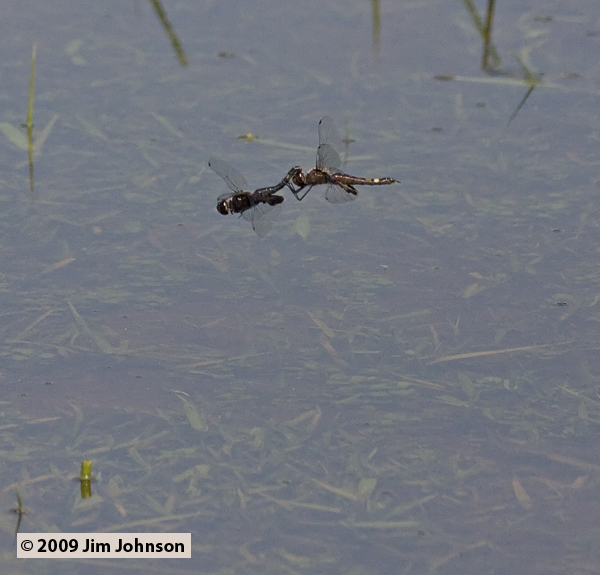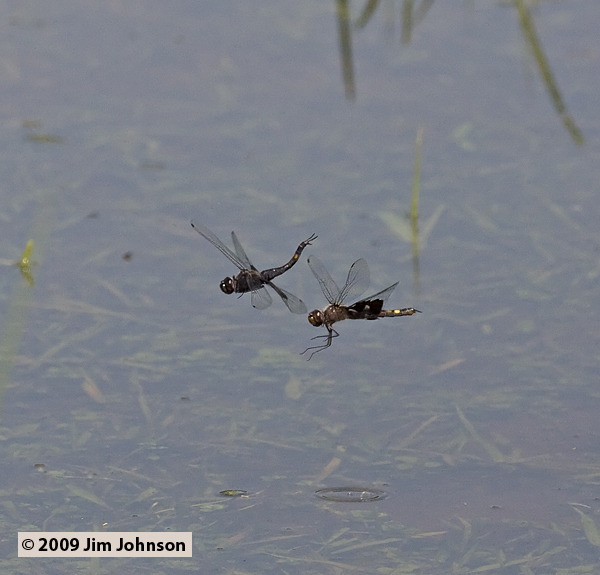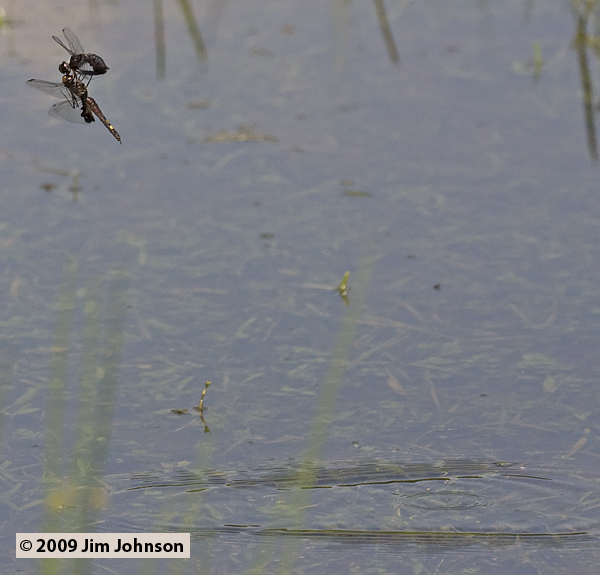





|
|
|
Below is a series of photos of a pair of Tramea lacerata (Black Saddlebags)
performing their oviposition "dance" in Grayson Co., Virginia, 30 May 2009. This behavior is
performed by all members of the genus and occurs periodically, interrupting long tandem flights.
|
| |
|
1. The male and female fly in tandem over a pond or lake where oviposition will take place. |
 |
| |
|
2. The male releases the female and she drops toward the water surface. |
 |
| |
|
3. The female taps the surface of the water once or more with the end of her abdomen, releasing eggs
each time (notice ripples at lower right), then flies back up to the male where he grabs her
to return to tandem flight. |
 |
| |
|
|





